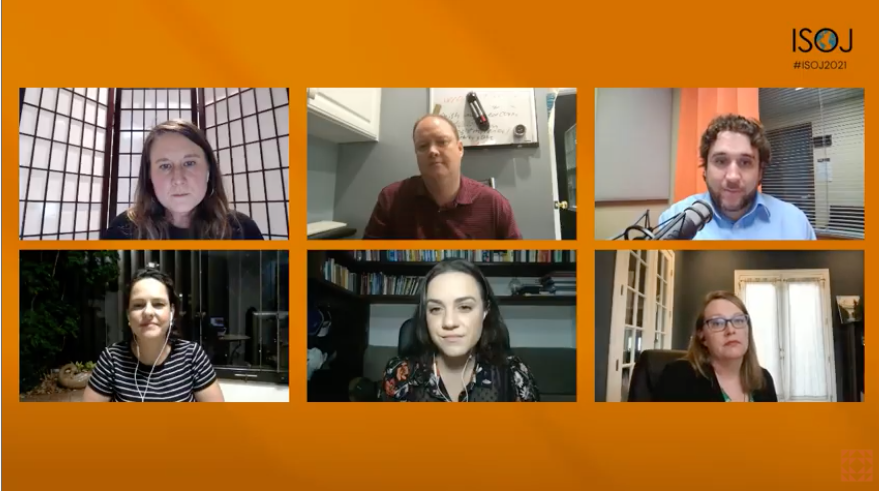Research on bots, credibility and zombie sites capture the evolution of online journalism at ISOJ
Researchers from around the globe shared their work on digitally innovative bots, news cues and zombie news content as part of the 22nd International Symposium on Online Journalism (ISOJ).
Their peer-reviewed works, presented virtually on April 27 at ISOJ, were selected for the #ISOJ Journal, now in its 11th volume.
These robots include different data processing systems that monitor legal content, suspicious government activity, transparency inside the Brazilian government and biased news links. Each bot publishes a Tweet or alert when their objective is detected to try and combat corruption and misinformation. DalBen and Jurno’s research explores the plurality of automated journalism. When summarizing what their research stand is, Jurno said “they believe the exercise of working with professionals in development teams [surrounding automating journalism] contributes to the expansion of journalist’s perspectives.”
The tools being implemented to fight misinformation are incredibly helpful to the journalism atmosphere, but another crucial point to understanding why this infodemic plague is spreading, is to understand the different demographic factors that lead a reader to seek out information on a news site. These are the things Amber Hinsley has set out to uncover. Her research surrounds what factors influence reader’s reliance on news cues, confirmation bias and confidence in identifying misinformation.
Hinsley explained that her results prove that a variety of demographic factors, such as level of education, contribute to determining which news consumers look for, as well as their assessments of information. This can contribute to creating news literacy efforts. Her research has a specific focus on which areas need greater attention in the effort to help people become more critical consumers of news and information, and in learning which cues can signal credibility.
Hinsley said that all these findings can be used when looking at the development of effective strategies for news literacy, alongside repeated training to build research skills and an appreciation for objectivity.

But, what happens when a consumer seeks out a news site they developed a relationship with and all of the sudden, it is gone?
This is the exact topic of research that Burton Speakman and Marcus Funk have spent years studying. They’ve explored this newfound trend of “zombie content and news sites.”
Their research included surveying 400 community news sites in 2015 and then again in 2020 to check for updates to the news business model and websites themselves.
What they found was a lot more sites had a paywall in 2020, and publications that already had paywalls in 2015 were fewer.
They also found that some sites were taken over by other businesses or cities, some stopped updating, some lacked new or necessary information and some were completely abandoned and taken over by foreign language commercial sites.
They claim to not know the answer to the question of how to stop this trend from continuing further, but with the information this research provides, the path there is a little clearer.
Each researcher and presenter will be considered for the ISOJ 2021 Top Research Paper award, which will be announced at the last panel of #ISOJ2021, which takes place Friday, April 30th at 4 p.m. UTC – 5.

